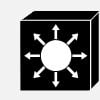Options
STP, any advise?
in CCNA & CCENT
STP always seems to choke me up when I study it. I can't imagine it's a hard concept to grasp, but for me it seems almost impossible. I have read Lammle and Odom excerpt on STP, but for some reason can't seem to get the concepts.
Root Ports, Designated Ports, Blocking Ports, and Forwarding Ports...How they are calculated, costs for Root Ports, why a Designated Port AND a Root Port. These seem to be the hardest ones for me to wrap my tiny little head around.
Does anyone have any suggestions for me, any dumbed down simple to read articles or a good video that really helped you drill it in?
Root Ports, Designated Ports, Blocking Ports, and Forwarding Ports...How they are calculated, costs for Root Ports, why a Designated Port AND a Root Port. These seem to be the hardest ones for me to wrap my tiny little head around.
Does anyone have any suggestions for me, any dumbed down simple to read articles or a good video that really helped you drill it in?
Comments
-
Options
 Mrock4
Banned Posts: 2,359 ■■■■■■■■□□
Not trying to self-promote, but I posted an article on my blog a while ago that might help:
Mrock4
Banned Posts: 2,359 ■■■■■■■■□□
Not trying to self-promote, but I posted an article on my blog a while ago that might help:
STP: Root port selection | SGT CCIE
The easiest way to remember the roles, is to think that the root bridge always has every interface in the designated port role. Designated port roles always send BPDU's out. So in a way, designated ports face "Away" from the root bridge.
Root ports face "towards" the root bridge, and receive BPDU's on them (which are subsequently re-generated out their designated port to the next neighbor)
With regards to port cost, here's good article by stretch: Spanning tree port costs - Packet Life
Also, yesterday I started my PVST+/RSTP fundamentals video which essentially goes over both protocols, detailing how they work, showing comparisons, and some practical examples. I'll probably have that out this week on YouTube.
Have you had any hands on with switching/STP? I find that having hands on REALLY helps with STP. Once you actually see the root bridge election process, and see ports transitioning, etc- it makes a lot more sense.
Good luck. -
Options
 ciscoman2012
Member Posts: 313
Not trying to self-promote, but I posted an article on my blog a while ago that might help:
ciscoman2012
Member Posts: 313
Not trying to self-promote, but I posted an article on my blog a while ago that might help:
STP: Root port selection | SGT CCIE
The easiest way to remember the roles, is to think that the root bridge always has every interface in the designated port role. Designated port roles always send BPDU's out. So in a way, designated ports face "Away" from the root bridge.
Root ports face "towards" the root bridge, and receive BPDU's on them (which are subsequently re-generated out their designated port to the next neighbor)
With regards to port cost, here's good article by stretch: Spanning tree port costs - Packet Life
Also, yesterday I started my PVST+/RSTP fundamentals video which essentially goes over both protocols, detailing how they work, showing comparisons, and some practical examples. I'll probably have that out this week on YouTube.
Have you had any hands on with switching/STP? I find that having hands on REALLY helps with STP. Once you actually see the root bridge election process, and see ports transitioning, etc- it makes a lot more sense.
Good luck.
Yes, thanks so much Mrock4. I will def. check it out when it's finished. -
Options
 Futura
Member Posts: 191
My 2p, or 2 cents for the Americas
Futura
Member Posts: 191
My 2p, or 2 cents for the Americas
I had 4 3550 switches at my disposal, I labbed every single situation, drawing it first, labbing it then recording results.
then I drew them again, written on dps & roots working out myself, then labbing to see if I was right.
Start with two switches,. change costs, and prioritys, record your results.
then moved onto three, and so on.
By the end, I loved stp, I could work it all out in my head.
Lab, Lab, Lab.
Hope this helps you! -
Options
 djfunz
Member Posts: 307
djfunz
Member Posts: 307
The easiest way to remember the roles, is to think that the root bridge always has every interface in the designated port role. Designated port roles always send BPDU's out. So in a way, designated ports face "Away" from the root bridge.
Root ports face "towards" the root bridge, and receive BPDU's on them (which are subsequently re-generated out their designated port to the next neighbor)
Nice explanation. At the time, this was a confusing concept for me as well. I don't remember where I read it, but your explanation is very similar and cleared up the confusion.WGU Progress - B.S. IT - Completed

